Welcome to Picture Perfect, a column that discusses the most important events in army history. In this edition, we’ll discuss the Top Ten and its evolution over the years.
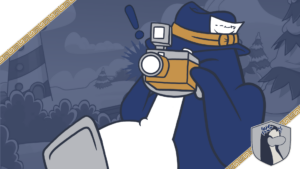
Designed by Cassie
EARLIEST TOP TENS
FIRST TOP TEN
Army of Club Penguin‘s Leader and Army Legend, Boomer20, posted the first Top Ten on April 15, 2009. The list ranked each army from one to ten based on the number of viewers and comments on their websites. The armies included were both major and medium in size. As such, Nachos and ACP were at the top with United Servers of Club Penguin and Shadow Troops at the bottom.
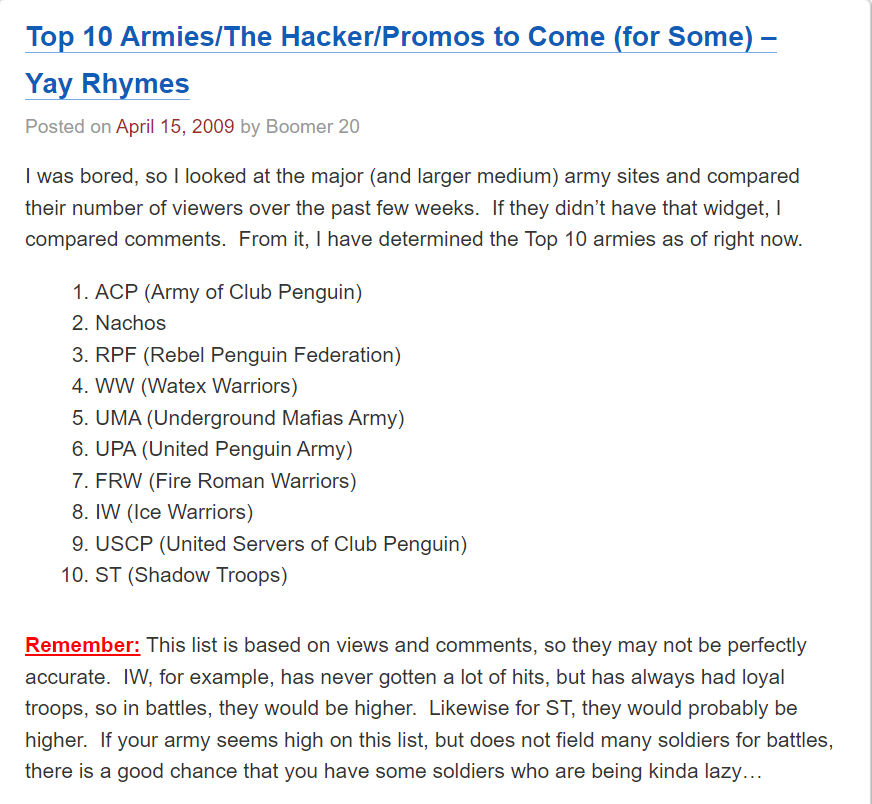
2ND AND 3RD TOP TENS
The next Top Ten released 6 days later had a much different format but was still on the ACP website. Armies were ranked based on their average size on Club Penguin. For the larger armies, multiple battles made rankings more accurate. Despite the different format, the rankings were similar to the previous week’s list. However, Rebel Penguin Federation dropped four positions and Golds was a newcomer just below Watex Warriors. The Top Ten released a month later had a similar layout as the Black Bandits made an appearance.
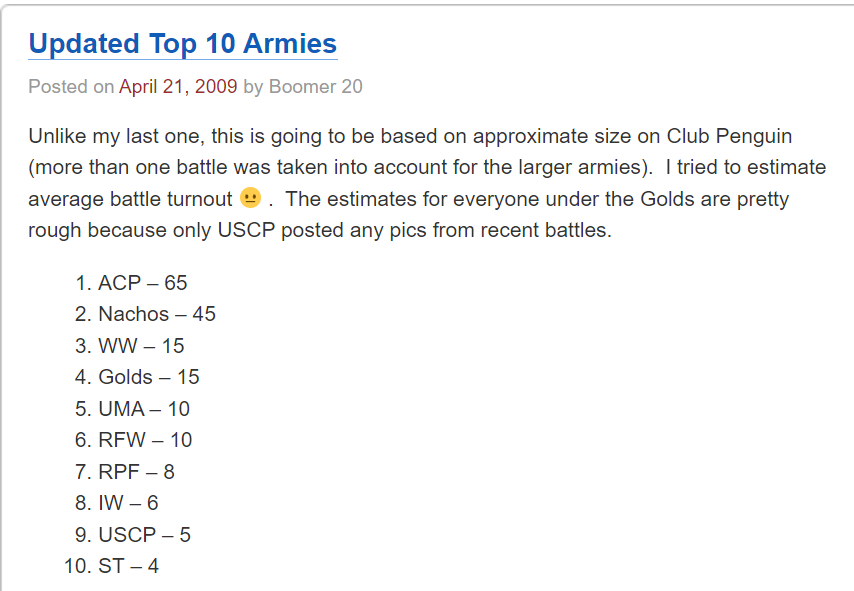

EARLY EVOLUTION
During the next few months, the Top Ten evolved to include many places an army moved up or down. Top Tens based on site viewership used two elements to calculate an army’s position. The most important ones were average daily site viewership and maximum daily site viewership weekly.
Three colors showed how a metric changed from the last ranking: green, yellow, and red. Green indicated improved performance or increased site viewership. Yellow meant an army stayed consistent in its rankings and site viewership. Red was the worst thing for an army as it suggested decreased interest from troops.
Additional factors other than size or site viewership like chat attendance were important in evaluating an army’s performance. Based on these Top Tens, Nachos and ACP were the two most dominant armies throughout 2009 based on the Top Tens released. The last official Top Ten on the ACP website came out on September 15, 2009. Other Top Tens on the site lacked the previously mentioned factors.
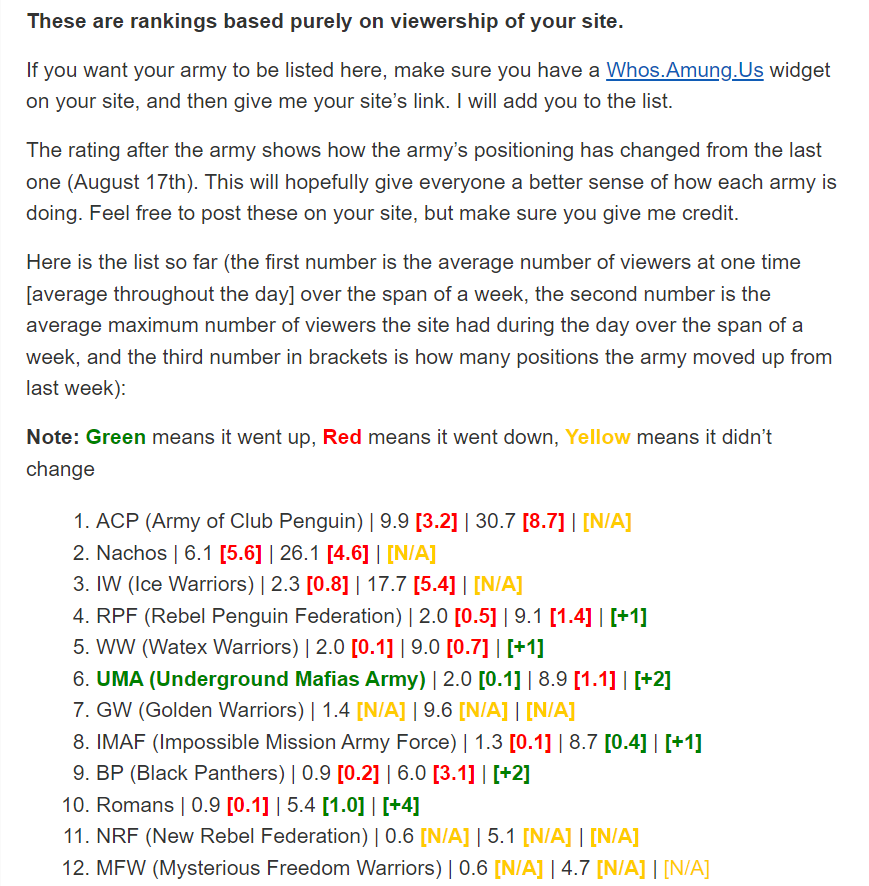
Last ACP Top Ten
CPAC Top Tens
BEGINNINGS ON CPAC
Club Penguin Army Central (CPAC) was founded on July 28, 2009, by WW Leader and Army Legend, Woton. Soon after, the organization adopted Boomer 20’s ranking system on August 5, 2009. Nachos topped off the list with ACP in second as Underground Mafias Army and RPF were at the bottom. Unlike Boomer’s Top Tens, the CPAC Top Tens discussed the events held each week and the sizes each army achieved. The rankings also compared aspects of each army’s site and chat with one another. Based on these factors, the Top Ten armies overall were established as ACP, Nachos, and Ice Warriors were far above other armies in 2009.
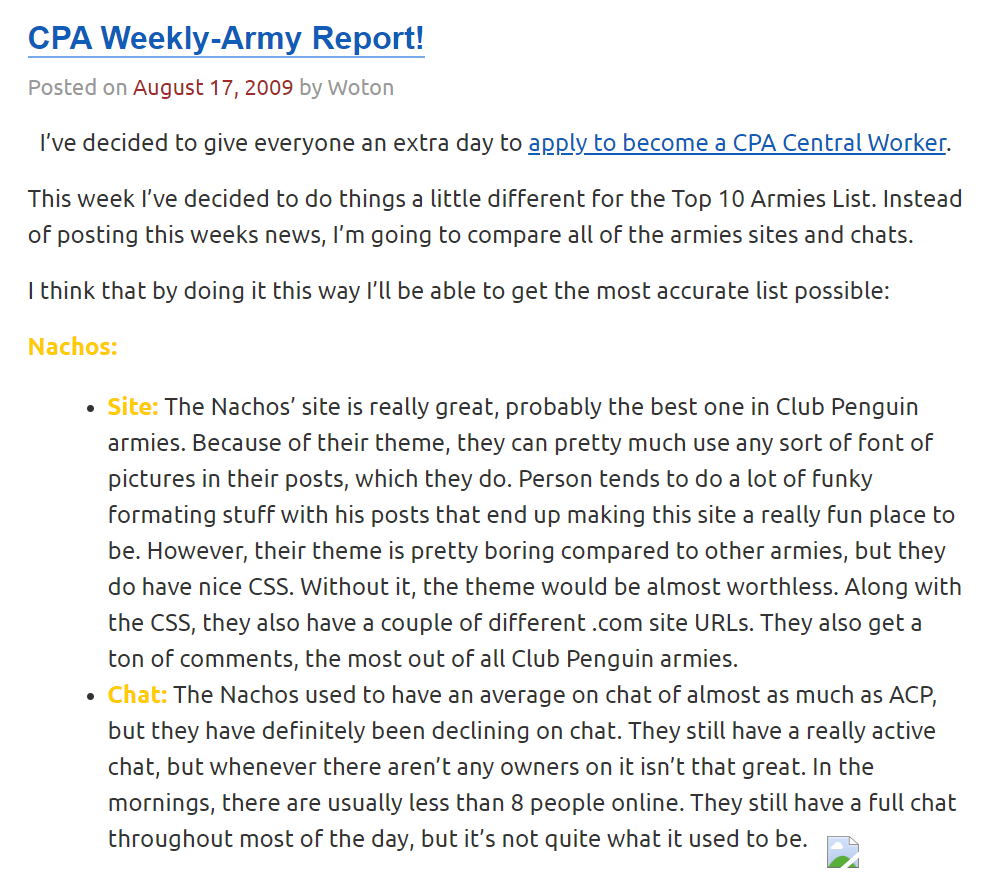
SMALL/MEDIUM TOP TENS
In the following years, the ranking system stayed the same for the most part besides the establishment of a Small/Medium Top Ten. These divisions separated armies based on their event sizes. The size required to fit into these three different categories depended on the state of the armies at the time. Therefore, there were multiple Top Tens with the largest armies being in the Major Top Ten.
The small and medium categories merged into one small/medium category later on. As a result, Bepboy9, Water Vikings leader and Army Legend formed Small Medium Army Central in 2010. Small Medium Army Press followed in 2013 not long after. The creation of SMAP resulted from SMAC’s decline the same year as the site became less popular. In 2016, these two organizations merged months before Club Penguin’s shutdown in March 2017.
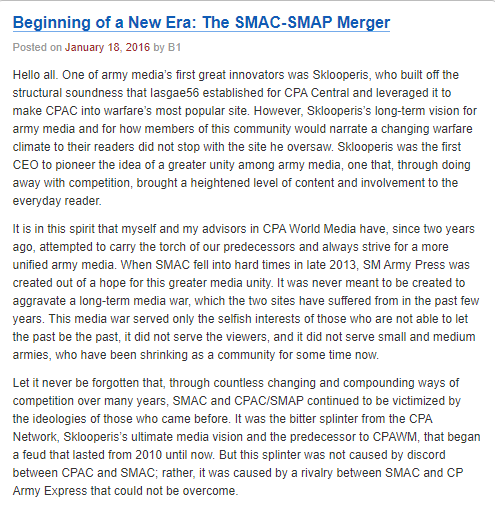
SMAC-SMAP merger
CHANGES TO THE TOP TEN FORMULA
A year after SMAC’s creation, the Top Ten formula changed significantly as approved by the army community. The new formula accounted for an army’s average size (40 points), tactic quality (25 points), event quality (25 points), and consistency (10 points). These all added up to 100 points and an army’s number out of 100 determined their place on the Top Ten. An army’s chat size and number of events did not impact their ranking.
Instead, different types of events were given point values such as battles against another army (4 points), training on smaller servers (2 points), and recruiting events on bigger servers (1.5 points). Battles against other armies were essential if an army wanted a high ranking. It was also important for armies to prioritize events on smaller servers for maximum event points. The changes increased competition between armies and discouraged events on servers with more users.
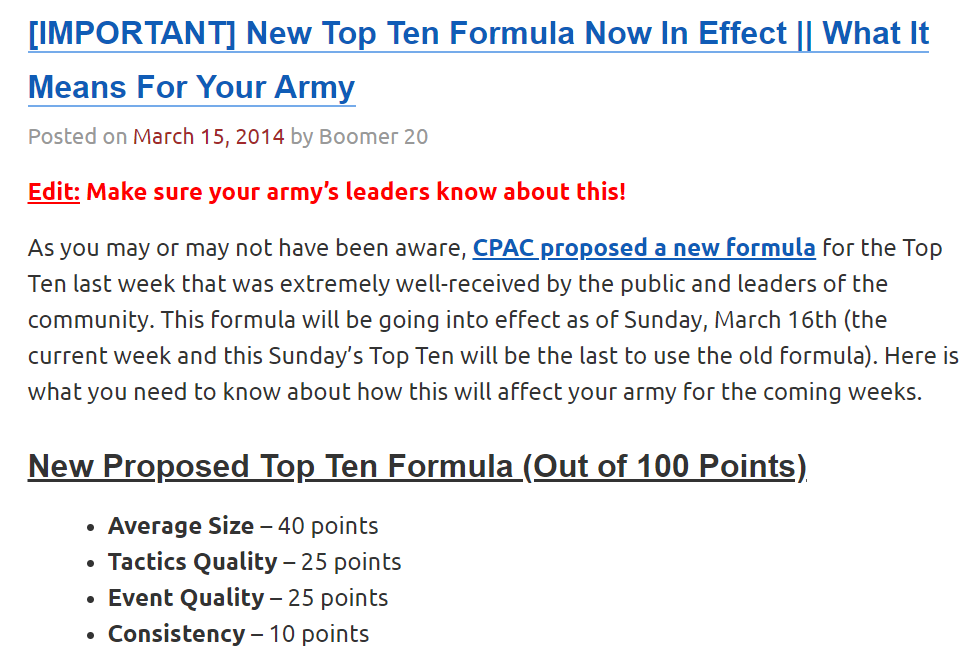
Boomer20’s announcement on Top Ten changes
The new formula worked and some aspects of it are still used by Club Penguin Armies today. However, we do not know the current formula used, nor how calculations are done.
Subsequently, the Top Ten evolved from an arguably subjective ranking to one that ranked armies more accurately. Today, the Top Ten is still important to judging who the best army is in the present moment. The discussion of army history is not complete without considering the impact of the Top Ten. How are calculations done nowadays? Did you enjoy the story of Top Tens?
Aurora
Reporter